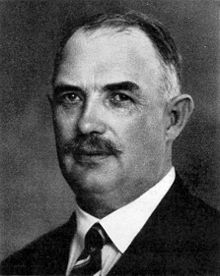Election to the Swedish parliament in 1936
Election to the Swedish parliament in 1936
%
50
40
30th
20th
10
0
45.86
17.57
14.35
12.89
4.38
3.31
1.63
Gains and losses
compared to 1932
% p
6th
4th
2
0
-2
-4
-6
+4.15
-5.89
+0.27
+1.14
-0.93
+0.33
+0.91

After the resignation of the Social Democratic government because of a defeat in the Reichstag, Axel Pehrsson-Bramstorp became Prime Minister from June to September 1936. His minority government, consisting only of the farmers' union, in which he was also Minister of Agriculture, was also known as the summer government because of the short term in office. After the election he was again Minister of Agriculture
The election to the Second Chamber of the Swedish Reichstag on September 20, 1936 brought renewed votes for the Social Democrats, who entered into a coalition government with the Bauernbund.
The liberal party, which had been split since 1923, reunited and was now called the "Liberal People's Party". Instead of the communists (not the Comintern) , the socialists were now running . The two new parties, the National Socialist Workers' Party and the Swedish National Association , were close to the German NSDAP .
| Political party | % Votes |
Change to 1932 |
|---|---|---|
|
Social Democrats Sveriges socialdemokratiska arbetareparti |
45.9% | + 4.2% |
|
Conservative Allmänna valmansförbundet (General Electoral Association) |
17.6% | −5.5% |
|
Bondeförbundet farmers' union |
14.3% | + 0.2% |
|
People's Party Folkpartiet |
12.9% | + 0.8% |
|
Socialists Socialistiska partiet |
4.4% | −0.9% |
|
Communists Sveriges kommunistiska parti |
3.3% | + 0.3% |
|
Swedish national association Sveriges nationella förbund |
0.9% | + 0.9% |
|
National Socialist Workers' Party National Socialistiska arbetarepartiet |
0.6% | + 0.6% |
|
Swedish National Socialist Party Svenska nationalsocialistiska partiet / Nationalsocialistiska blocket |
0.1% | −0.5% |
| Other parties | 0.0% | −0.1% |